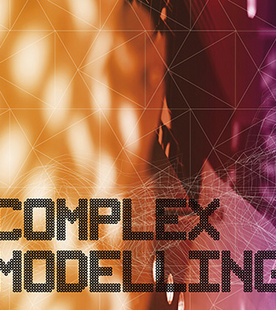Silica: 3dprinting recycled glass for a circular material paradigm

Silica examines the making of 3D printed tiles from recycled container glass. We explore how robot-controlled extrusion can offer new material practices by which to fabricate glass elements of an architectural scale.
We pursue working with recycled container glass powder – a waste product derived from the reprocessing of recycled container glass – to contribute to circular development within an interdisciplinary artistic development context in the meeting between architecture and glass design.

Silica takes point of departure in this conflicted parallel narrative of glass as an opaque veil. The central reason for this is the material resource of recycled soda lime glass powder. Silica develops new composites by which to reform the powder as a thick paste that can be extruded through a 3D printing process and then sintered through firing. By building on a paté de verre process, the property of the new sintered glass is a translucent opacity. The extrusion process allows low scale control of deposition and therefore a highly detailed forming. In Silica, this process is used to form the tiles with varying density, thereby grading the translucency of the tiles.
In our process we mix the glass powder with wheat flour and water in order to bind the material for 3D printing. This natural binder is burnt during firing creating an inherent porosity that can be controlled by varying the recipe of the paste as well as the firing temperature. An opportunity in this process of making is the adding of colours. For this purpose, we have used ceramic stains that fires up to 1300 degrees Celsius. By varying the amount of stains added to the material mixture, which regulates the saturation of the colours. Furthermore, we have investigated ways of creating continuous colour gradients by filling varying colours in the same printer cartridge.

The paste is 3D printed through an extrusion process. For this process, we have developed bespoke tools for extrusion that allow us control over the flow rate. The set-up consists of a robotic arm with an attached tube that feeds the glass paste from the printer cartridge. A linear actuator ram feeds the paste to a ViscoTec dispensing pen attached to the end of the robotic arm that allow us to stop and start the printing procedure according to the design and gives us control of fine printing. Glass has an inherent capacity to become 6 mm thick upon fusion, which coincides with the fact that the mixture needs a high concentration of flour in order to flow properly through the dispensing device and avoid pulling apart in the firing. The print paths are therefore scaled to these inherent material properties.


Papers
Silica: a circular material paradigm by 3D printing and recycled glass
Ramsgaard Thomsen, M., Tamke, M., Sparre-Petersen, M., Buchwald, E. F. & Hnídková, S., 2020, Anthropologic-Architecture and Fabrication in the cognitive age: Proceedings of the 38th eCAADe Conference. Berlin : TU Berlin, Bind 2. s. 613-622 128





